- All checklists
- Marketing
- Sales call checklist
Sales call checklist
A sales call checklist aids professionals in preparing for meetings by emphasizing research, personalization, and follow-up. It helps in organizing, addressing objections, and closing deals, benefiting sales teams, leaders, operations, and entrepreneurs.

- Look up the contact with LiveAgent
- Learn about previous interactions with your customers
- Get to know your lead’s background
- Visit the lead’s LinkedIn profile
- Inform the customer about the agenda and invite them to the meeting
- Define the goal of the call
- Prepare your UVP (unique value proposition)
- Move smoothly to the business topic
- Ask open-ended questions
- Learn about the prospect’s goals and challenges
- Present your solution
- Answer objections
- Identify the decision-makers
- Ask about the budget
- Set a timeframe
- Determine their specific needs
- Offer an individual approach
- Prepare a tailored offer
- Send a thank-you message
- Establish a schedule for follow-up calls
- Ask for feedback
Making a sales call can be nerve-wracking, especially if it’s your first time doing so. Don’t worry – we’re here to help. This checklist provides you with a handy list of tasks so you don’t miss anything. Let’s get started.
The importance of a sales call checklist
A successful call meeting is all about preparation. That’s why it’s helpful to use a sales call checklist to make sure you’ve covered everything you need before your meeting.
A sales call checklist has many benefits – it helps you stay organized and ensures that you cover all the key points in your process or make adjustments as needed. Furthermore, it boosts your confidence in sales calls.
Who can benefit from a sales call checklist?
- Sales professionals
When you’re new to sales, a sales call checklist helps you remember what to say and do during and after your meeting or call. No matter how experienced you are, it can always come in handy and help you stay organized.
- Sales leaders
When you manage a sales team, you can use a sales call checklist to help your team members prepare for their meetings. You can also use it to track your team’s progress and identify areas where they need improvement. Checklists can also aid with identifying bottlenecks in the sales process.
- Sales operations professionals
Those working in sales operations can use a sales call checklist to improve the efficiency of their team meetings. A well-crafted checklist can also help reduce the amount of time it takes for your team to prepare for meetings so they can focus on selling.
- Entrepreneurs
Business owners can use a sales call checklist to help them close more deals. A comprehensive sales call checklist will remind them of all the key points they need to cover during meetings. This allows them to concentrate on the pitch.
The bottom line is that a sales call checklist is a valuable tool for anyone who strives to be successful in sales.
Explore the sales call checklist
Pre-call planning
Having customer service software integrated with a CRM is a great starting point for sales reps. This way, they can see all customer interactions and their associated data in one place.
Why is it important to look up the contact with LiveAgent?
In order to get up-to-date information about a prospect before making a call. Sales reps can use the customer data in their CRM to get the info, which includes past interactions, contact history, and account details. Having this information ahead of time can help sales reps personalize their pitches and have more meaningful conversations with prospects.
How to look up the contact with LiveAgent?
With LiveAgent’s built-in CRM, you can see a history of your customer’s interactions with the business. You’ll be able to view all past messages and details about each interaction including the context, channel, and previous conversations.
You can also write custom private notes about each client to be sure that you don’t miss a single detail.
If you don’t already have LiveAgent, no problem. You can still use our free 14-day trial to get a sense of how the software works and see if it’s a good fit for your business.
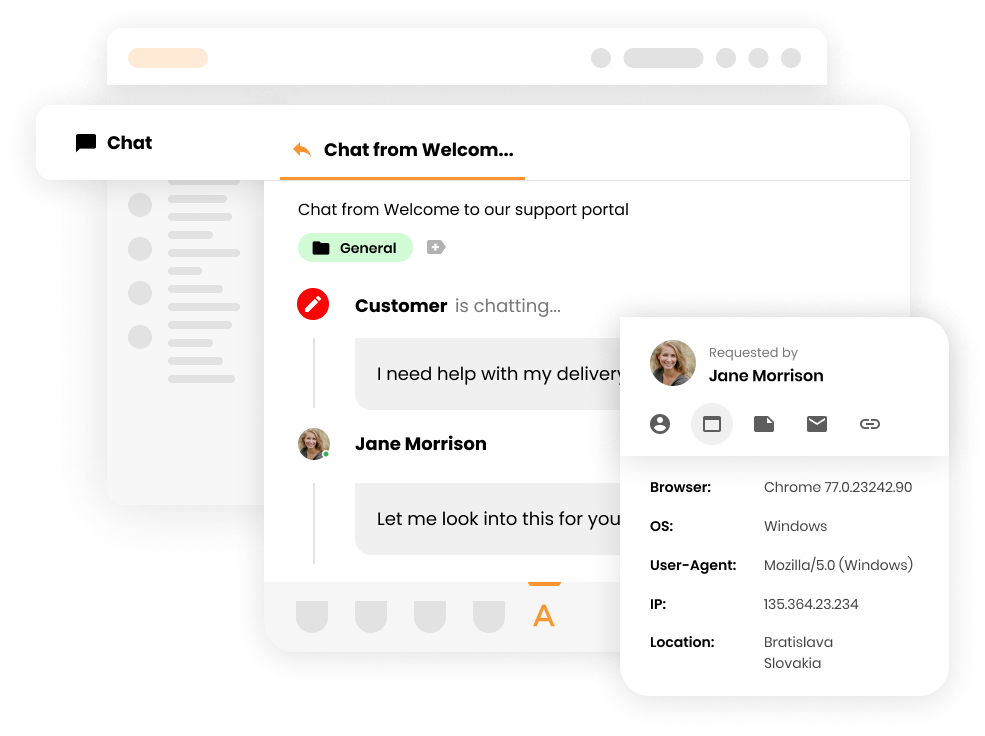
Which tools to use to look up contacts?
- built-in LiveAgent CRM
- third-party plugins
Previous interactions give you a lot of insight into how to approach a customer in the future.
Why is it important to learn about previous interactions?
Pre-call research helps you avoid repeating the same mistakes, gives you an idea of what topics to stay away from, and shows you what areas are most relevant to your customers. These insights can help you tailor your sales pitches to better meet your customers’ needs, as well as build trust and credibility.
How to learn about previous interactions?
If you’re working with a customer for the first time, ask your sales reps or colleagues about any previous interactions they have had with them. When managing a sales team, consider using a CRM that includes historical customer data so that you can better understand their past behavior.
You receive meaningful insights from LiveAgent in a universal inbox that combines tickets from multiple channels under one roof.
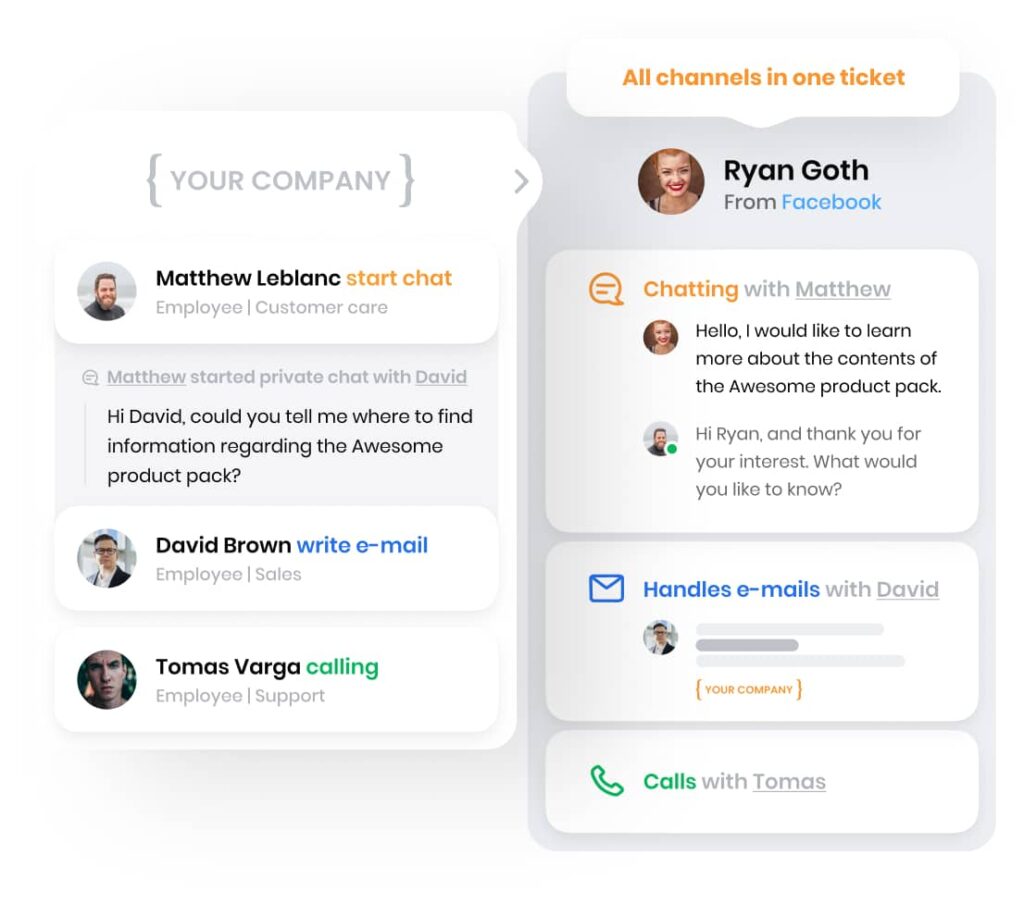
Which tools can you use to learn about previous interactions?
- sales funnel
- LiveAgent’s universal inbox
Knowing more about your lead will help you better understand their needs and motivations.
Why is it important to know your lead’s background?
It helps you with the advertising sales pitch and shows that you’re interested in getting to know your leads. Discovering that background gives you many clues about which topics to discuss. Having enough information can also support personalization, which is essential if you want to build trust with your lead.
How can you get to know your lead’s background?
Ask them directly. You can also research their company online to learn more about their products and services. If you’re using a CRM then view your lead’s contact information to see where they’re from and what type of work they do.
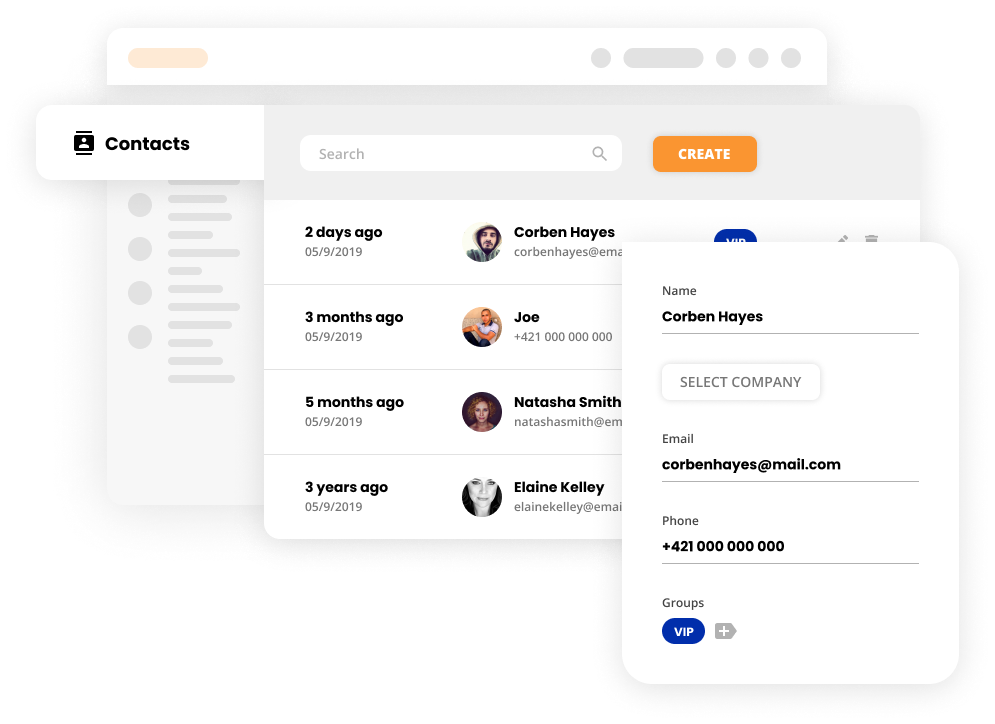
Which tools can you use to get to know your lead’s background?
- social media platforms
- Google search
- call logs
- talk history
LinkedIn is a powerful networking tool that can help you learn more about your leads.
Why is it important to visit the lead’s LinkedIn profile?
It helps you see your leads’ work history, understand their current role, and get an idea of their interests. You can also use LinkedIn to find common connections.
How to visit the lead’s LinkedIn profile?
There are a few options to check your lead’s LinkedIn activity. You can go to their LinkedIn page directly, or use a tool like Sales Navigator to find their profile and see additional information about them. If you’re using a CRM, you can also view your leads’ LinkedIn profiles directly from there.
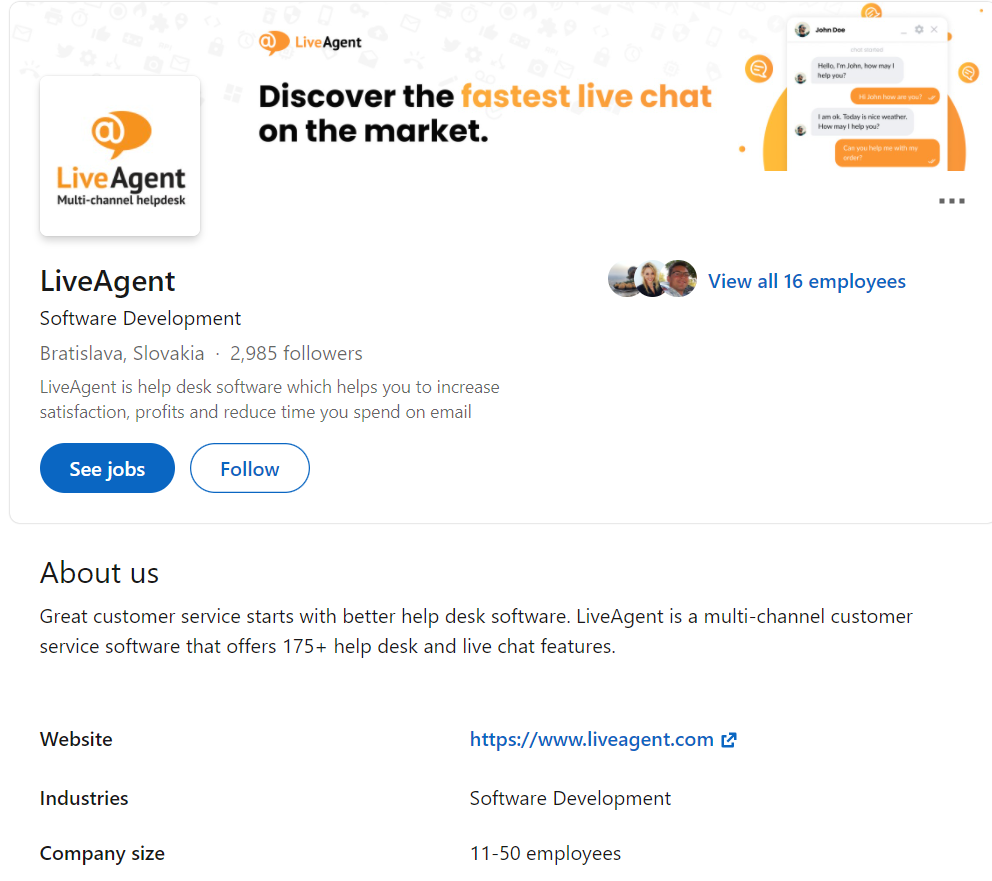
Which tools can you use to visit the lead’s LinkedIn profile?
- LinkedIn feed
- Sales Navigator
- CRM
- scraping tools
It is crucial to start preparing from the moment you inform your customer about the agenda and invite them to the meeting.
Why is it important to inform the customer about the agenda?
It ensures that both of you are on the same page, shows that you respect clients’ time, and gives them a chance to ask any questions they may have. It also shows that you’re organized and prepared, building trust with your lead.
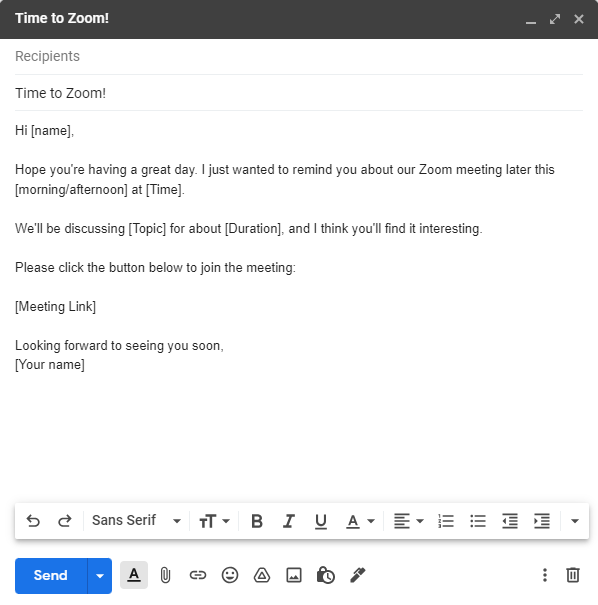
How can you inform the customer about the agenda?
Your best bet is to send your customer a meeting invitation or email before it takes place to inform them of the agenda. Or you can do so during your introduction on the call. If you’re using an automation tool, you can create templates for your email and meeting invitations that will automatically include the agenda.
Which tools can you use to inform the customer about the agenda?
- meeting invitation
- CRM template
- Sales Appointment solution
Before you start the call, take a few minutes to think about what exactly it is that you want to achieve.
Why is it important to define the goal of the call?
It helps you stay focused and ensures that both parties are clear about what you’re trying to accomplish. It also allows you to measure whether or not the call was successful afterward.
How can you define the goal of the call?
Decide what you want to achieve before you start the call. What would be the best outcome for you? You can mention this goal during your introduction on the call.
Which tools can you use to define the goal of the call?
- meeting invitation
- CRM template
- goal setting worksheet
With so many salespeople out there, it’s essential to have a clear and concise way of explaining what sets you apart.
Why is it important to prepare your UVP?
It helps you stand out from the competition, makes it easy for your lead to understand what makes you unique, and can thus help you close more deals.
How can you prepare your UVP?
Consider what makes you special and what you can offer your leads that no one else can. Ensure that your UVP is transparent and stands out from the competition. You can also create a UVP template to use for every sales call.
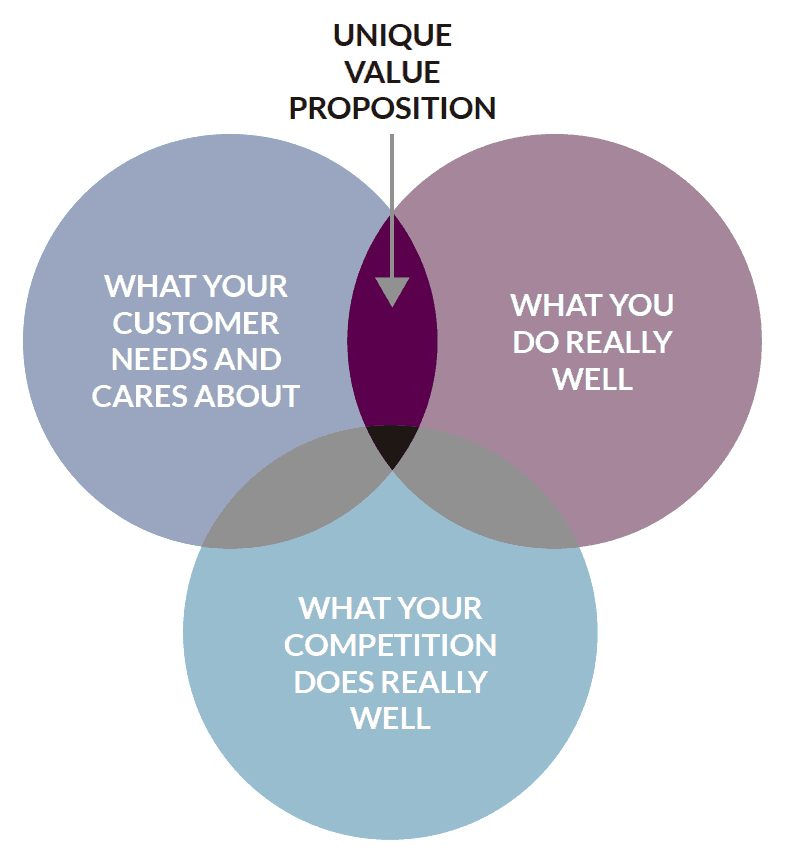
Which tools can you use to prepare your UVP?
- UVP worksheet
- elevator pitch
- competitive analysis
- sales presentation template
- sales pitch example
During the call
Following your introduction, you can move on to the heart of the discussion – your business topic.
Why is moving to the business topic important?
You have to keep in mind that the customer’s time is valuable, so make sure to get to the point quickly. It’s also crucial to stay focused on the agenda so you can cover all the necessary topics within the designated time.
How do you move smoothly to the business topic?
Introduce yourself and the company then give a brief overview of what the call is about. You can also mention any previous interactions you’ve had with the customer. Once you’re ready, you can move on to the next item on the agenda.
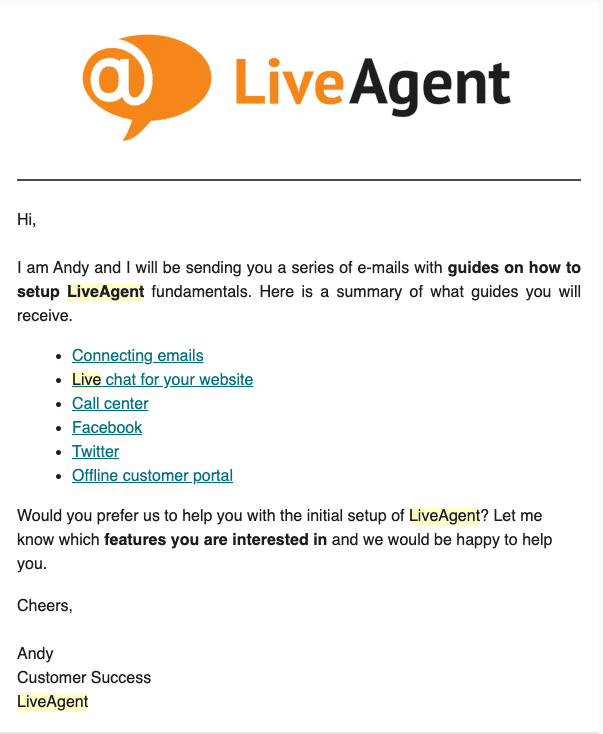
What tools can you use to move smoothly to the business topic?
- meeting invitation
- CRM template
- agenda worksheet
- introduction email template
With open-ended questions, sales professionals can learn more about their prospects in seconds.
Why is it important to ask open-ended questions?
They allow you to gather more information about your leads and help build rapport. They also show that you’re interested in learning more about the customer, and can help you uncover any objections they may have.
How do you ask open-ended questions?
You need to avoid questions with yes or no answers. Instead, focus on questions that begin with who, what, when, where, why, or how. This gives your leads a chance to maneuver with their responses – and therefore give you more data. Instead of a simple one-word answer, you can obtain insights you wouldn’t find anywhere else.
You can also use follow-up questions to further explore the answers.
Which tools can you use to ask open-ended questions?
- open-ended question worksheet
- questionnaire
- interview guide
- objection handling sheet
To determine whether the lead may be interested in your offer, find out more about their goals and challenges.
Why is it important to learn about the prospect’s goals and challenges?
In addition to giving you ideas for potential solutions, it helps you assess if your product is a good fit for them or not. It also shows that you’re interested in helping your clients reach their goals.
How do you learn about the prospect’s goals and challenges?
During the call, ask questions that will help you understand their business needs. You should also discover any pain points they may be experiencing. In case they are using another product or service, find out how they compare and contrast to yours.
Understanding your customer’s requirements will help you better position your product as a solution.
Which tools can you use to learn about the prospect’s goals and challenges?
- goal setting worksheet
- needs assessment questionnaire
- competitor analysis template
Now is finally the time to present your solution!
Why is it important to present your solution?
It’s often the only opportunity for you to demonstrate all the features of your product. It also gives you the chance to explain how your product can help the client and answer any of their questions.
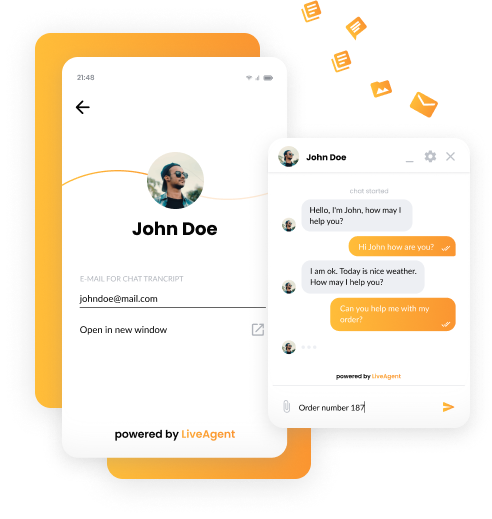
How do you present your solution?
Start by introducing your product or service then explain how it solves the potential customer’s problem. Provide a demonstration or case study to show how it works. Be sure to have a pricing sheet or proposal ready to go so that you can discuss the budget and next steps.
Which tools can you use to present your solution?
- demo script
- case study template
- pricing sheet
- proposal template
Even if you’ve done everything right, there’s always a chance that the customer will have objections. It’s vital to be prepared so that you can overcome them and close the deal.
Why is it important to answer objections?
By dispelling doubts, you demonstrate that you’re listening to the customer and are interested in addressing their concerns. Also, you can explain in detail how your offer alleviates their pain points.
How do you answer objections?
Acknowledge the objection and then provide a response that explains how your product or service can address it. If you don’t have an answer, be honest and tell the prospect that you’ll get back to them. In this step, you can also offer a discount or trial to help overcome their objection.

Which tools can you use to answer objections?
- objection handling sheet
- discount offer template
- trial offer template
Before you can close the deal, you need to determine who the decision-makers are. This way, you can ensure that you’re speaking to the right people and that they understand your offer.
Why is it important to identify the decision-makers?
Without this step, you might waste a lot of time – so you should identify the decision-makers to ensure the right people have all the information needed to convert.
How do you identify the decision-makers?
During your call, ask questions about who is involved in the decision-making process. Request their details so that you can follow up with them. If they are not on the call, you can ask to be redirected to them.
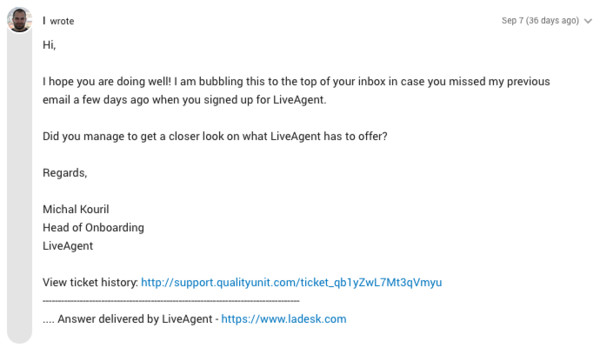
Which tools can you use to identify the decision-makers?
- decision-maker contact sheet
- follow-up email template
- lead nurturing solutions
By asking about the potential customer’s budget, you can be sure you are not spending your energy on leads who cannot afford your products or services.
Why is it important to ask about the budget?
It shows that you’re interested in working with the client and willing to tailor your solution to their needs. Knowing the budget helps you find out if there is any flexibility or willingness for a common resolution.
How do you ask about the budget?
Simply ask how much the customer is willing to spend on a particular solution. You should also find out if they have any flexibility in their budget and if they’re open to discussing pricing options.
Which tools can you use to ask about the budget?
- budget worksheet
- pricing sheet
To close the deal, you need to set up a timeframe for how long the offer is valid.
Why is it important to set a timeframe?
Setting a timeframe shows that you are willing to work within their schedule. It also gives your leads a sense of urgency, so they will feel the need to make a decision.
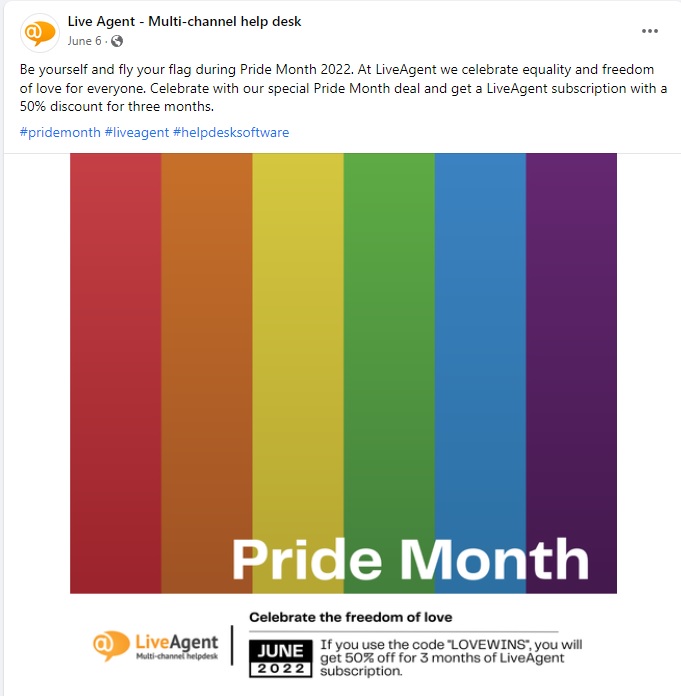
How do you set a timeframe?
In your proposal or pricing sheet, include a date until which the offer is valid. You can also provide a deadline for when they need to decide whether or not they want to move forward.
Which tools can you use to set a timeframe?
- offer software
- CRM
- proposal template
- pricing sheet template
Ensure that your product or service can satisfy the customer’s specific needs before closing the deal.
Why is it important to determine their specific needs?
It shows your customers that you’re eager to work with them. It also helps you discover if they have any requirements or restrictions, ensuring your product or service will fulfill their needs.
How do you determine their specific needs?
During the call, ask questions about what they’re looking for in a solution. Take into account what they need and if your product can fully cater to these requirements.
Which tools can you use to determine specific needs?
- needs assessment template
- questionnaire template
- online forms
When you’re closing the deal, it’s helpful to offer an individual approach. This shows that you’re willing to work with the customer in the long term.
Why is it important to offer an individual approach?
It demonstrates your commitment to particular collaboration. It supports customizing your solution according to their needs too, letting them know that you are interested in finding a way to work as partners in the future.
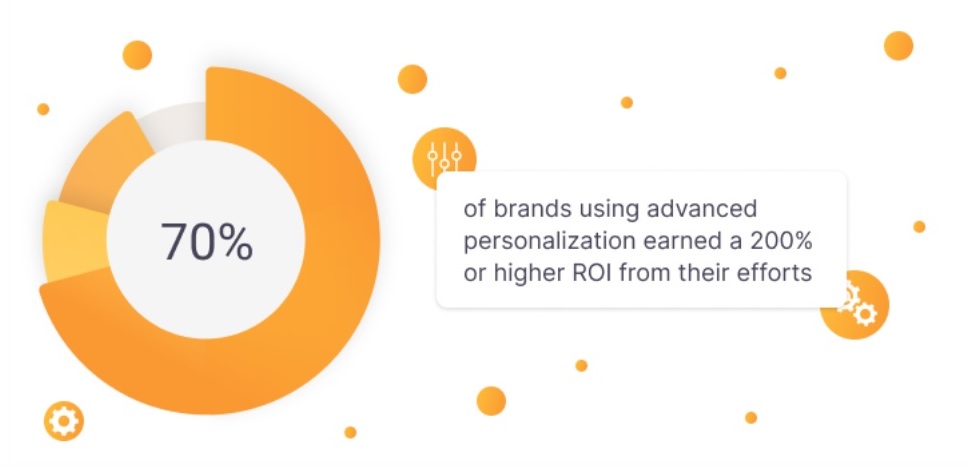
How do you offer an individual approach?
In your proposal or pricing sheet, include a section on how you will work and mutually benefit from the collaboration. You can also mention how you will be available to answer questions throughout the process and what can be customized.
Which tools can you use to offer an individual approach?
- proposal template
- pricing sheet template
- customer service agreement template
Closing
The right way to prepare your offer will hugely determine your success.
Why is it important to prepare a tailored offer?
A well-prepared, customized offer often seals the deal faster. Personalizing offers for customers shows that you understand their challenges and want to accommodate their needs.
How do you prepare a tailored offer?
Your tailored offer should not be too complicated or overwhelming for the customer. As such, it’s often helpful to keep things simple and focus on highlighting a few key benefits that stand out most. Include your UVP too.
Which tools can you use to prepare a tailored offer?
- proposal template
- pricing sheet template
- customer service agreement template
Send the customer a thank-you message after you’ve finished the call or closed the deal.
Why is it important to send a thank-you message?
This demonstrates your appreciation for both their business and their time. Even if you don’t finish the deal now, such a message will leave a positive impression and may help you close it later.
How do you send a thank-you message?
You can send an email, write a letter, or even give them another call. Just be sure to express your thanks and let them know how much you appreciated the interaction.
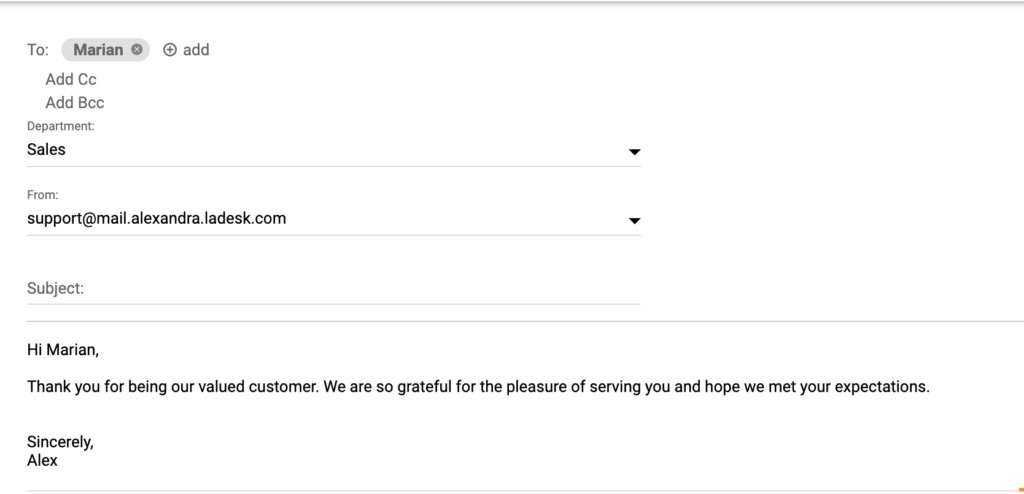
Which tools can you use to send a thank-you message?
- phone call script template
- email template
- contact details
If you are unable to close the deal on your first call, schedule a follow-up.
Why is it important to establish a schedule for follow-up calls?
Keeping in touch with a client allows you to build a relationship and stay on top of their needs at the same time. Follow-up calls demonstrate your commitment to working with them and closing the deal as soon as possible.
How do you establish a schedule for follow-up calls?
Have a calendar showing your availability and check the frequency and cadence of potential calls. Also mention that you plan on calling the customer again, and you can even schedule the exact date and time for it.
Which tools can you use to establish a schedule for follow-up calls?
- reminders template
- calendar template
- notification managers
After you’ve closed the deal or finished the call, always ask for feedback.
Why is it important to ask for feedback?
Asking for feedback allows you to improve your sales process. You can quickly find out where you need to improve and what areas are well covered.
How do you ask for feedback?
You can send an email, write a letter, or even give the customer another call. Sometimes even sending a short survey or a yes/no questionnaire can work well.
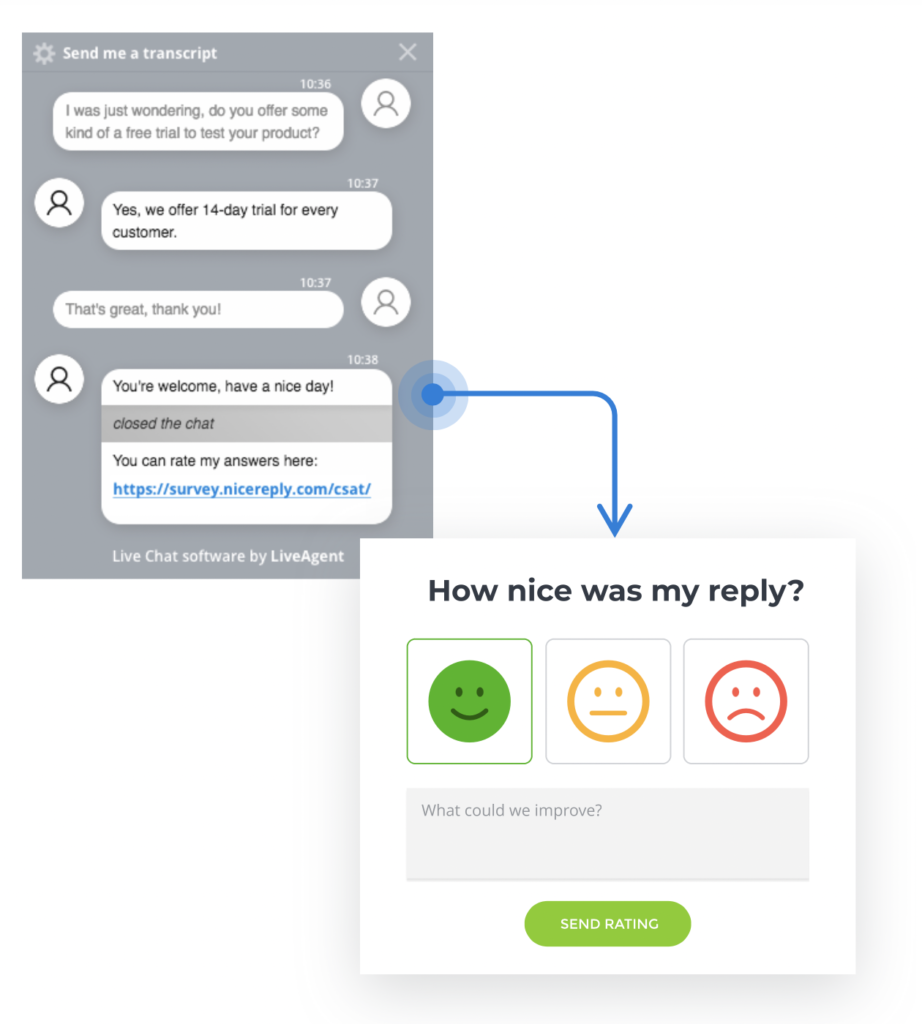
Which tools can you use to ask for feedback?
- phone call script template
- email template
- letter template
Types of sales call
Cold calls
A cold call is a sales call made to a prospect who has had no prior contact with the salesperson. Cold calls are typically made by businesses that are selling products or services that the prospect is not already familiar with. The goal of a cold call is to establish a relationship with the prospect and generate interest in what the salesperson has to offer.
Warm calls
Warm calls are made to potential clients who have been identified as being interested in your products or services. They may have previously expressed interest, downloaded content from your website, or attended an event you sponsored. The main goal of a warm call is to move the prospect down the sales funnel by getting them on the phone and engaging them in conversation.
Traditional sales calls
A traditional sales call is a meeting between a salesperson and a potential customer. Traditional sales calls usually take place after the prospect has been identified as being interested in your product or service, and the goal is to close the deal and make a sale.
Summary of sales call checklist
Pre-call planning:
- Look up the contact with LiveAgent
- Learn about their previous interactions with your customers
- Get to know your lead’s background
- Visit your lead’s LinkedIn profile
- Inform the customer about the agenda and invite them to the meeting
- Define the goal of the call
- Prepare your UVP (unique value proposition)
During the call:
- Move smoothly to the business topic
- Ask open-ended questions
- Learn about the prospect’s goals and challenges
- Present your solution
- Answer objections
- Identify the decision-makers
- Ask about budget
- Set a timeframe
- Determine specific needs
- Offer an individual approach
Closing:
- Prepare a tailored offer
- Send a thank-you message
- Establish a schedule for follow-up calls
- Ask for feedback
Frequently Asked Questions
How do you make a successful follow up call?
To make a successful follow-up call, it's crucial to have a clear understanding of the purpose and goals, as well as any previous interactions with the person you're calling. One key factor is being prepared. This includes reviewing notes from previous conversations, identifying any unresolved issues, and having a clear agenda for the call. Additionally, maintaining a positive and professional demeanor throughout the call is essential. This includes being respectful and attentive to the person you're speaking with. Finally, following up on any commitments or promises made during the call, and taking appropriate action to move things forward, is key to a successful follow-up.
Why are follow up calls important?
Follow up calls can help you build stronger relationships with your potetial customers because it shows genuine interest in their needs. They also provide an opportunity to address any questions or concerns the prospect can have, which can ultimately lead to closing the sale. In addition, follow up calls help you to stay on their mind and increase your chances of securing a positive outcome.
How soon should you follow up after a sales call?
It is generally recommended to follow up withing 2-3 days after a sales call. This gives the prospect enough time to process the information and make an informed decision, while also demonstrating your commitment to their needs.
How do you structure a sales call?
To structure a sales call, you need to know what your goals for it are. Usually, there are two types of goals: discovery and persuasion. Discovery goals involve finding out more about the customer and their needs, while persuasion goals involve trying to get them to buy something from you. Once you know your goal, you need to come up with a structure for the call to help you achieve it. This usually involves asking questions and then listening attentively to the answers. Be sure not to bombard the prospect with too many questions at once, as this can be overwhelming and may turn them off doing business with you. Take your time and let the conversation flow naturally.
How do you pitch a product on a cold call?
When pitching a product on a cold call, it's essential to connect with the person on the other end of the line. This could involve briefly introducing yourself and your company, and asking open-ended questions to understand the recipient's needs. It's also important to be clear in your pitch, focusing on the key benefits of the product. Using real-life examples can make the pitch more compelling.
What skills do you need for cold calling?
Cold calling requires a combination of different skills. Communication skills are essential for effectively conveying your message and building rapport with the person on the other end. Persuasion skills are important for convincing the recipient to engage in the conversation and potentially take action. Active listening skills are crucial for understanding the needs of the person you are speaking with, allowing you to tailor your approach and responses accordingly.
What are the four types of sales calls?
The four types of sales calls are introduction calls, product demonstration calls, price objection calls, and closing calls. The introduction call is your opportunity to introduce yourself and your company to a potential customer. The product demonstration call is your sales opportunity to show the customer how your product can benefit them. The price objection call is your opportunity to address any concerns the customer may have about the cost of your product. And the closing call is your opportunity to make a sale by getting a commitment from the customer.
How to use the sales call checklist?
Go through it before every call to make sure that you’re covering all of the necessary topics and keeping track of your progress. It can be helpful to review your notes from previous calls so that you can see what worked well and what didn’t.
How to determine the goal of your sales call?
The goal of any sales call should be to establish a rapport with the potential customer, identify their needs, and then determine whether or not your product or service can meet them.
How do you prepare for sales calls with new customers?
There’s no magic formula for preparing for sales calls, but there are a few things you can do to set yourself up for success. First, research your potential customer. This will help you tailor your sales pitch to their specific situation. Secondly, you should practice your pitch until you’re confident and comfortable with it. You don’t want to sound like you’re reading from a script, so memorize key points and bullet points rather than word-for-word. You also need to be prepared to answer any questions that the customer may ask.
You will be
in Good Hands!
Join our community of happy clients and provide excellent customer support with LiveAgent.

Our website uses cookies. By continuing we assume your permission to deploy cookies as detailed in our privacy and cookies policy.
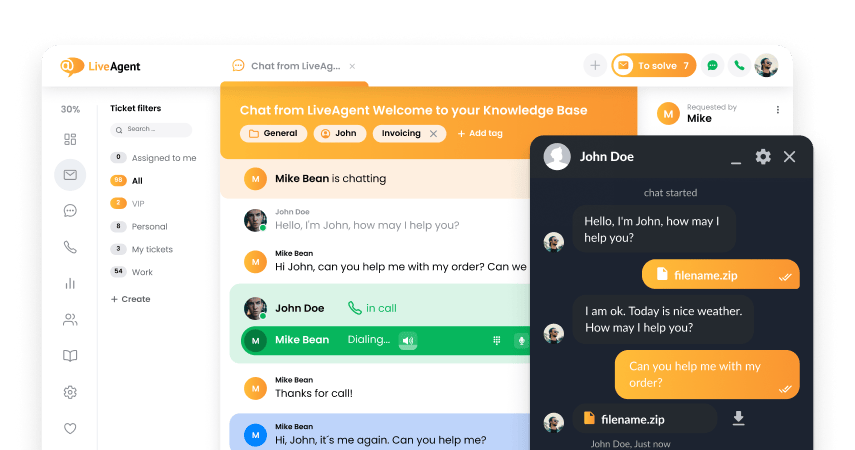
- How to achieve your business goals with LiveAgent
- Tour of the LiveAgent so you can get an idea of how it works
- Answers to any questions you may have about LiveAgent

 Български
Български  Čeština
Čeština  Dansk
Dansk  Deutsch
Deutsch  Eesti
Eesti  Español
Español  Français
Français  Ελληνικα
Ελληνικα  Hrvatski
Hrvatski  Italiano
Italiano  Latviešu
Latviešu  Lietuviškai
Lietuviškai  Magyar
Magyar  Nederlands
Nederlands  Norsk bokmål
Norsk bokmål  Polski
Polski  Română
Română  Русский
Русский  Slovenčina
Slovenčina  Slovenščina
Slovenščina  简体中文
简体中文  Tagalog
Tagalog  Tiếng Việt
Tiếng Việt  العربية
العربية  Português
Português 
